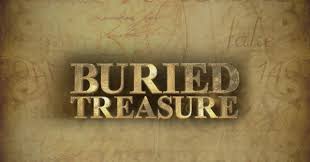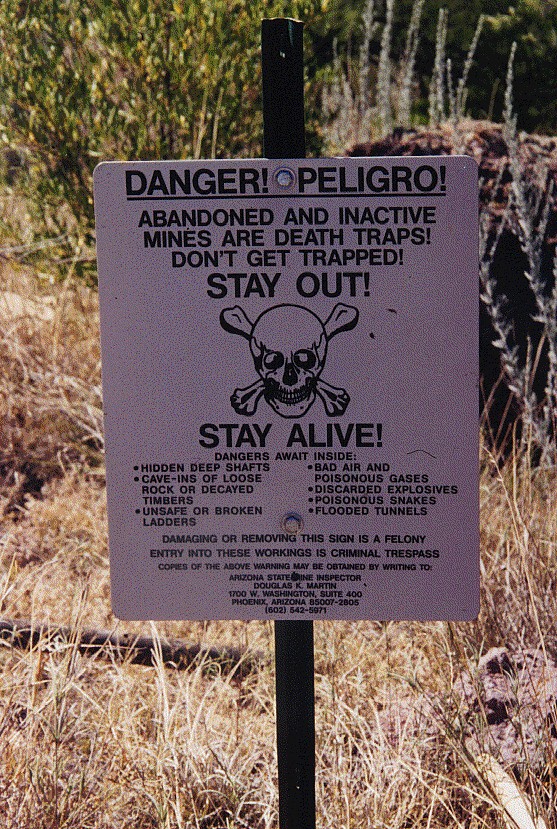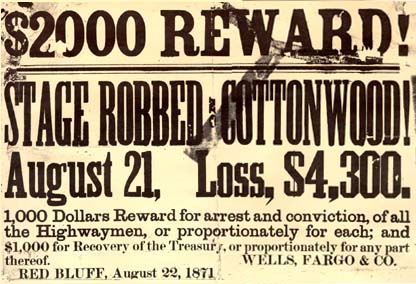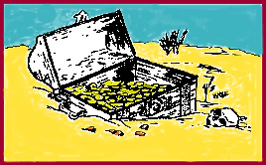
SCIENTIFIC TREASURE FINDING

SCIENTIFIC TREASURE FINDING
Treasure legends abound in the western hemisphere---there are
hundreds of stories in print. They tell us about lost Spanish
galleons, buried pirate gold, of Wells-Fargo robberies, the rediscovery
of long, lost mines, and of the mattress-hordes of eccentric old
prospectors. Most of these stories have little basis in fact.
They make exciting bedtime reading but would not be wise financial
investments as far as search and recovery is concerned. Unfortunately
even the most improbable tales of the old west has its die-hard
adherents, and often a bevy of snake-in-the-grass con artists
waiting in the wings, eager to sell shares to the rich city slickers
from back east. Renowned treasure salvor Robert Marx, who researches
all his dives carefully, once said to me that only one or two
shipwreck stories in a hundred could be verified and substantiated
by such efforts as a thorough search of the colonial archives
in Spain. One has only to add up the total of the alleged treasure
loot said to lie in New Mexico, Arizona or Utah to realize the
national debt could be paid off quickly if only a fraction of
it was ever found.
Yet amateur treasure hunters abound in the western United States
today. Looking for lost artifacts is loads of fun and surely a
healthy and exciting form of adventure---provided the searcher
understands clearly that his odds of striking it rich (or even
paying expenses) is much lower than was old fashioned gold-prospecting
in early California or Colorado. However, not all legends of the
old west are fake or fictional. The historical account of the
original discovery of gold and treasure under Victorio Peak in
1937 and the many subsequent affidavits and testimonies from individuals
who claim to have seen the gold, raise the validity probability
of the Doc Noss story considerably above the ranking of most other
stories of lost artifacts in the Western United States. Ground-penetrating
radar corroboration of the existence of the caverns adds further
evidence supporting the belief that Victorio Peak contained at
one time lost artifacts. There are many good reasons why this
particular treasure story should be checked out thoroughly up
to and including complete underground exploration of the mountain
to settle the matter once and for all. It is to the great credit
of the Ova Noss Family Partnership that their own commitment to
the solution of the mystery of Victorio Peak involves careful
historical research and an intelligent scientific exploration
program. (This search is currently still underway as of March
1996).
All too often the cold, hard facts about the rarity of real treasure
finds and actual recoveries are forgotten once "gold fever"
sets in. Accounts of once-enthusiastic treasure seekers who ended
up spending thousands (or hundreds of thousands) of dollars, but
who wound up disillusioned---would fill a big book if the stories
were ever told. For the past twenty years this writer has been
privileged to take part in a number of credible and not-so-credible
treasure searches at home and abroad. Countless inquiries about
a scientific approach have come to me by phone and by mail. From
my own experience I have observed that treasure hunting can be
a serious and respected profession, or a fascinating hobby for
all sorts of people young and old. But, the serious treasure hunter
should do as much advanced homework as possible before investing
money or going to the site with pick and shovel.
Here are a few suggestions for putting together a careful research
project based on my own experience. A bit of planning and research
can do much for the serious searcher who wants to improve his
odds and spend his time and money in the most effective manner
possible.
First, get a good set of maps. In addition to local county or
state maps showing roads, title and claim boundaries, buy a topographic
map on of the highest resolution available from the nearest United
States Geological Survey (USGS) office. Earlier versions of the
same topo map often show when changes were made at your site.
If the site is important to you and your topo map is old or low
in resolution, you might want to hire a local aerial-survey company
to make a new topo map for you from stereo aerial photography.
This can often be done for a few thousand dollars. You'll have
a good set of high-resolution aerial photos of your site as a
bonus. The State geologist, or the USGS, can also get you a geological
map of your area which can often be helpful in understanding the
rock types, faults, strata and expected sub-surface features of
your area. A visit to local libraries or historical societies
often yields old maps, early photos, and even early aerial photos
of an area. These can be most helpful if you are looking for a
lost mine or a treasure site that has been reported for more than
a few decades. Don't neglect to make your own map of your site
which shows surface features and workings. If there are underground
workings, map them also, preferably using a transit. If the site
is extensive you might want to hire a professional surveyor to
do this for you.
Second, aerial photos of the area may show you many features not
noticeable to the observer on the ground. Old trails, roads, and
ancient mine tailings can often be detected from the air, especially
in desert areas where vegetation recovers very slowly from human
activity. Color photos by a commercial mapping firm can often
be blown up by a large factor so that even very small surface
features are readily discernible. In many localities aerial photos
already exist and can be ordered from government or commercial
mapping agencies for a few dollars each. I've been to sites in
the desert where old mines are claimed to exist but where aerial
photos show undisturbed mature desert plants and desert-varnished
rocks and soils for miles around. At other sites just a little
homework could show that the local geology completely precludes
any mineralization.
Third, if you are searching for an old mine, consult your state
Bureau of Mines or the US Federal Bureau of Mines for historical
mining records on the area of interest. Pay attention to the actual
recorded production of an old mining district. Talk to a reputable
local geologist about mineralization expected in the area based
on the modern day geological knowledge he'll probably have at
his fingertips. You might want to have him visit your site to
specifically delineate the actual geology at your site.
Fourth, talk to old timers in the area and visit local historical
societies. You may be able to track down retired miners who once
worked now-abandoned mines in your area. If nothing else, their
stories can give you wonderful insights into local history. Take
a tape recorder if possible or write down all details in a log
book. [It is inherent in treasure stories that the amount of gold
tends to grow spontaneously with each retelling of the tale].
University and college professors often specialize in local history
and may be able to shed additional light on the legends you are
investigating. Retired city or county officials often can recall
the more colorful aspects of the past history of their area especially
with regard to lost mines or treasures legends.
Fifth, consider using a modern geophysical method such as resistivity,
seismics or ground-penetrating radar to show you sub-surface features
of greatest interest. One of these methods may very well be cost
effective if you are contemplating devoting more than a few days
to excavation or digging. If your search area is large geophysical
sensing may help you narrow the area of interest considerably.
Even digging a very small exploration tunnel into the side of
the hill may cost many thousands of dollars. Abandoned mines can
be very extremely dangerous and very costly to repair---simply
making an old shaft or tunnel safe to enter could well exhaust
your budget unless you have lots of backing and a strong motivation
to proceed. If you remain serious about your site, a local drilling
contractor can drill holes in your area rapidly and at a cost
below that of tunneling by at least an order of magnitude.

Sixth, you may wish to build transparent plastic model of your
site if underground workings are extensive. Such a model could
help you visualize underground features in three-dimensions and
gain entry expeditiously. If the area is caved or your site has
been obscured by bulldozing or by prospect holes try to reconstruct
the original lay of the land and perhaps map the best original
information onto your model. Locating old photographs of your
site may be helpful.
Seventh, if you don't have a specific treasure site in mind but
are looking for one, you might want to read some of the good books
on treasure hunting that are frequently advertised in popular
treasure magazines. Such books are also usually found in local
libraries and often carried in coin or rock-hound stores. Get
as much verification of the better stories as you can. Do as much
homework as possible by phone or mail before you go to the site
and prior to the spending of any major amount of money. Find out
your legal rights before you trespass on someone's private land
and get in trouble with the law or an irate local rancher.

If searching for treasure is for you a hobby and not intended
to become the principal source of income for your family, if you
look for the principal rewards in terms of meeting interesting
people and recovering a sense of history, if discovering a continuity
with the past makes your own life more meaningful, then by all
means find a way to get involved.
Dolphin's Laws of Old Western Mines and Caverns |
|
|---|---|
LAW I: |
"Inaccessible caverns fill with gold automatically with the passage of time. The greater the lapse of time and the more inaccessible the cavern, the larger the amount of gold." |
|
LAW II: |
"The total value of loot in an inaccessible treasure horde will increase by at least thirty percent with each re-telling of the original legend---regardless of inflation or the current world price of gold." |
| LAW III: | "The best ore is always to be found in flooded, abandoned old mines. The last miners to work in the mine are always willing to swear on a stack of Bibles that they stumbled onto a great lode of gold on the very same day the mine superintendent ordered the mine to be closed." |
| LAW IV: | "If you wait long enough, an inaccessible treasure cavern will generate an iron door over its concealed entrance and the gold will supplement itself with rusting Spanish armor, the bones of numerous Indian slaves, and a solid gold (or crystal) statue* of the Virgin Mary." |
| Note: | *In other parts of the world a solid gold statute of Buddha will do nicely. |
The above laws are inspired by William B. Beatty's famous "Hunt's First Law of Mineral Resources"

August 24, 1990